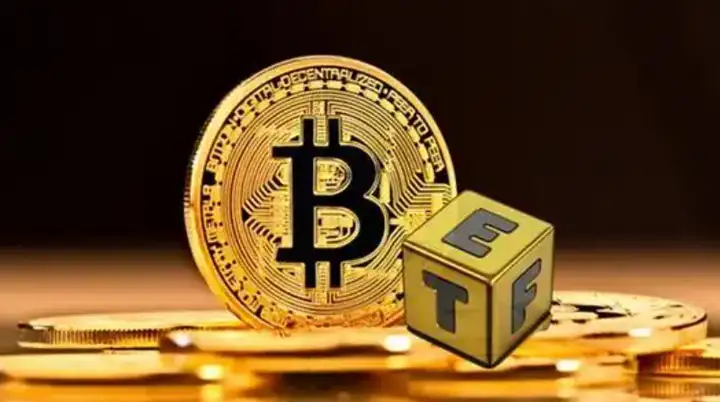ETFs saw large net inflows last week and the week before, totaling over $2.3 billion, but the CB spot market did not see the usual increase in trading volume, instead maintaining small-scale sales. Some futures market makers have noticed this trend and believe there is cross-trading day subscription arbitrage in the ETF space; that is, some ETF asset managers may not immediately buy BTC spot after receiving user subscriptions, but instead wait for a price pullback to buy, thereby realizing arbitrage, essentially shorting the user's subscription buy order.
VX: TTZS6308

So the futures market makers began to recklessly drive up the price, raising it from $62,000 to $69,000 in a week, causing a lot of pain for the ETF side, as the higher it went, the more difficult it became to buy BTC for the original subscription price. In a state of desperation, the CB spot market makers directly placed large spot sell orders at the highs, intimidating the market while hoping for a price pullback or a "long squeeze" in the futures longs; as long as the price falls, they can gradually buy the BTC spot that was originally subscribed by users, or even directly refund the funds that have not been used to buy spot when users decide to sell the ETF.
So last week, when ETFs saw large net inflows, not only did the CB BTCUSD premium continue to decline, but the spot CVD also did not show any significant large-scale buying, suggesting that the ETF managers did not actually buy the spot...
After the experienced futures market makers have driven up the price, they can now sit and wait for the ETF side to take the spot, so during the pullback, CME and aggregated futures trading pairs have been massively closing longs, but the price has been supported by the large spot buy orders on Coinbase.
The CVD of various exchanges during the pullback period was almost entirely selling, only Coinbase was making large buy orders... And ETF net inflows were very low, or even negative, which indirectly suggests that these buy orders from CB could only come from last week's ETF subscriptions, and they were likely just barely buying back the BTC spot that should have been bought last week, rather than stealing profits from users.
These buy orders have become the exit liquidity for the futures market makers' price-lifting campaign, and based on the main growth in futures positions, the futures market makers are mainly on CME, followed by Binance, as CME positions have grown the fastest during this period, and from the current total positions, this process is still ongoing, which means CB should continue to see sustained spot buying.
If this conspiracy theory holds true, then the futures market makers on CME and Binance are really impressive! They've grabbed the little loopholes of these ETF managers and plucked them bald in one fell swoop.
In summary:
There can be arbitrage between ETF subscriptions and asset managers' spot purchases by exploiting the time difference, which is essentially shorting the user's spot, waiting for the price to fall and then buying back the spot to realize profits, or waiting for users to sell the ETF at lower prices to realize profits.
The ETF's spot shorts were squeezed by the futures market, ultimately realizing the "futures price-lifting, waiting for ETF spot to take the plunge" operation to obtain exit liquidity. If this logic holds true, then the past week's futures long rally may not have been driven by Trump Trade sentiment or Carry Trade liquidity spillover, but rather a short squeeze by the futures market against the ETFs' long-term practice of stealing user profits through wide-range oscillations.
After all, this kind of operation has already appeared in the gold ETF, and the most suitable market for this operation is the long-term wide-range oscillation in the high-price range; since ETFs currently hold the most controllable chips and funds in the market, it is not impossible to control the market.
This also ultimately explains why, after BTC broke through the historical high through spot ETFs, it was able to oscillate widely around the previous high for more than 7 months! Because this kind of market can not only prevent ETF investors from leaving in large numbers (there is always a large spot support every time it falls), thereby reducing the ETF's management fees, but also constantly gamble with users in the oscillation to earn excess returns.
In short, it's about eating, taking, and robbing, and if there's profit to be made, what can't capital do?
The above content is a conspiracy theory! There is no definitive data to prove it, and the only evidence that can be cited is CB's premium and abnormal trading activity. No one hopes that this ETF, which brings hope to BTC, will end up being another case of capital hunting.







